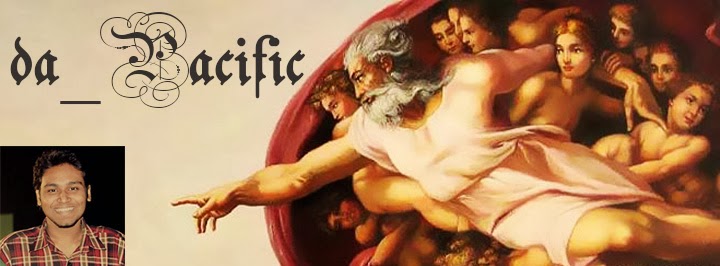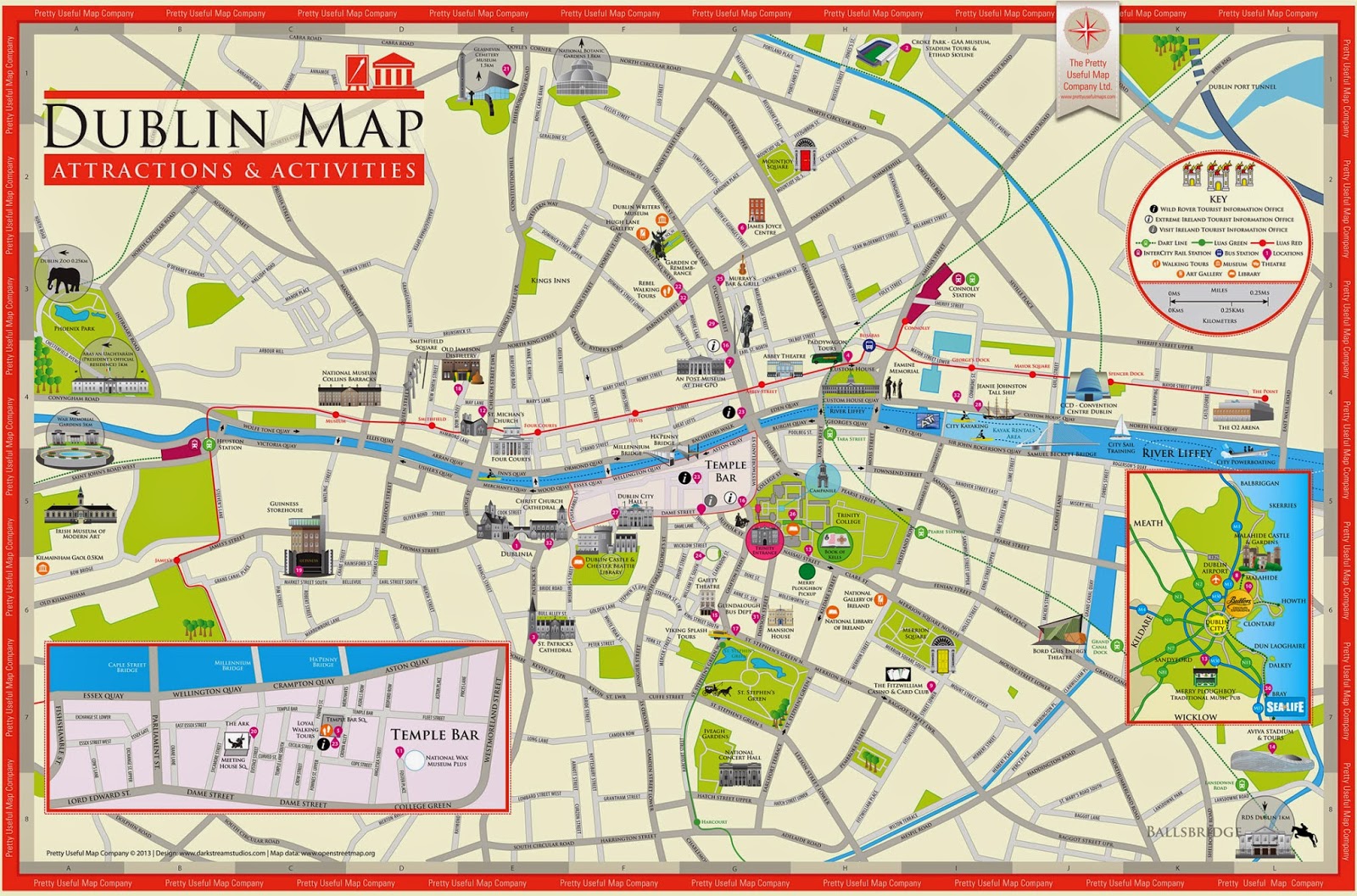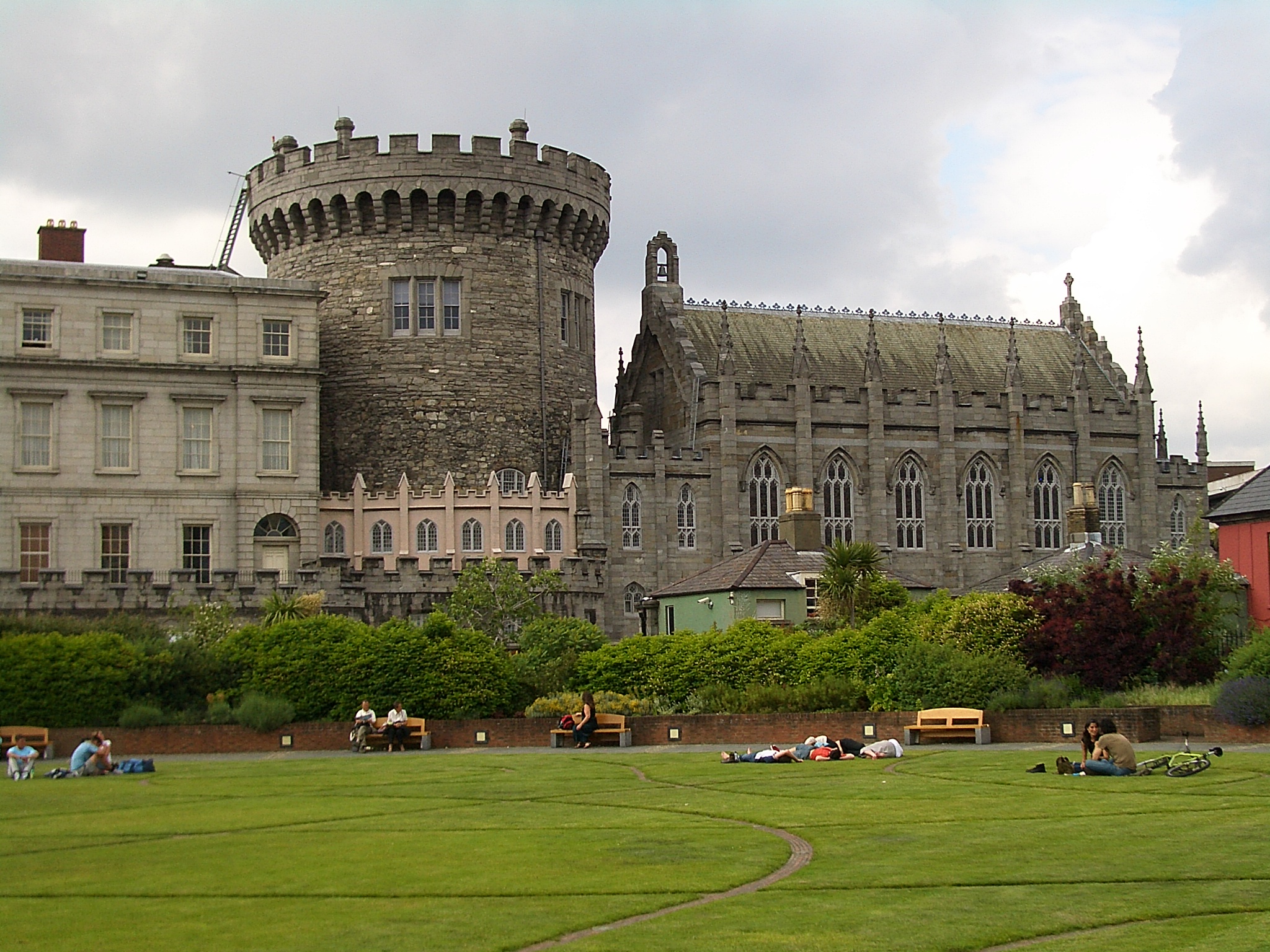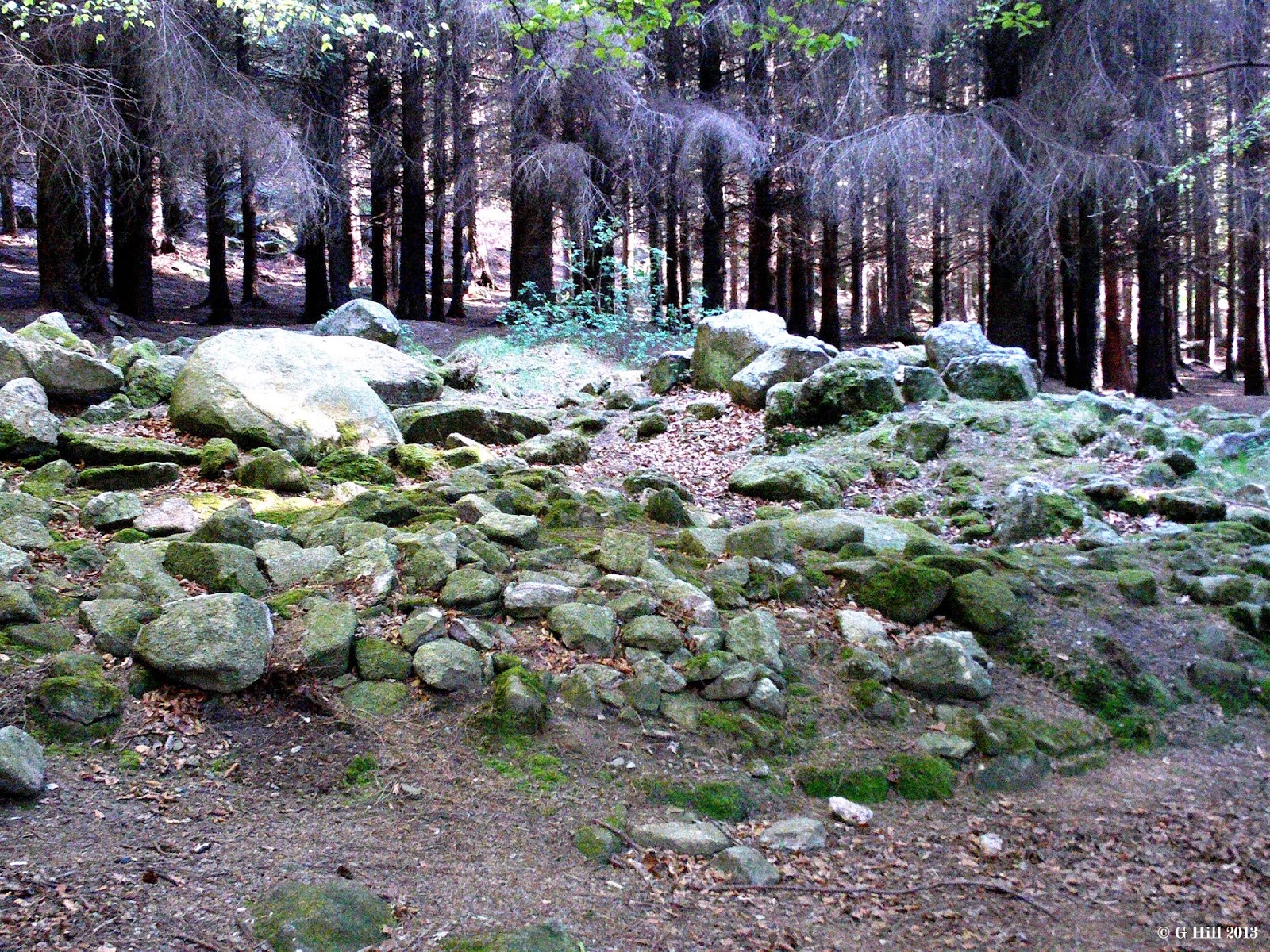Well, its good to see you smile. I guess your last vacation had been quite a pleasant one! Was it the a week in the lap of the Himalayas or an excursion to the Ajanta? Or maybe you just spent your time kayaking at Pattaya. Well, we all love to get everything in a single package, don't we? And if the package includes a really cool place with nearly regular showers and lots of natural and cultural beauty, I am sure you would hate to miss it! What more? Here the Sun is too reluctant to set early, which gives you ample time to work and enjoy at the same time. So, set out and get ready to dip yourself into this city of Irish ecstasy.
The capital city of Dublin lies in the province of Leinster, on Ireland's east coast, located at the mouth of the River Liffey. This global city, ranking among the top thirty cities in the world, is a historical and contemporary centre for education, the arts, administration, economy and industry.
The place can be reached by all means - land, air and sea, though the air route is most preferable, given the excellent services provided by several airlines like Air India, Lufthansa, Virgin Atlantic, British Airways and Etihad Airways. The place can also be reached by sea, as the the port is well connected to England. The railway service is equally good and the clean and punctual trains could not serve nay better!
Yes, the place is bound to amaze you with is beauty and splendour. Take your time and experience Dublin as the locals do. Cobblestone streets, bars, cafés, art galleries and architectural splendour harmoniously blend with old streetscapes and eco-friendly schemes. Among the cultural attractions are Dublin's only art-house cinema at the Irish Film Institute, the Gallery of Photography and the Project Arts Centre. Blend in the charm of the city as you hang out in the Temple Bar. There are more than enough places to dig your teeth into and savour the flavour of the city. Enjoy the peerless organic burgers, 'proper chubby chips' in old-fashioned buckets and delicious malts, shakes and juices at BoBo's. You can choose from a wide range of Cafeteria, around O'Connell Street, that will surely please you with their aesthetics, hospitality and of course, the food! - Bald Barista, Cobalt Cafe, The Winding Stair, Panem, Hugh Lane Cafe, Dunne & Crescenzi or Peploe's. At Chapter One, the choice of food is spectacular: Irish-caught yellow fin tuna with fennel and squid braised in saffron, and Connemara mountain lamb with rump glazed in mustard and white truffle honey are among the delights. You can follow them up with Irish raspberry poached meringue, almond and pistachio cracknel, and lime anglaise. You can savour excellent seafood at Aqua - Dover sole on the bone, baked sea bass, pan-fried halibut and slow-cooked organic salmon. Casual, but serious about its vegetarian customers, this long-running restaurant, 101 Talbot, nourishes wise locals who pay little attention to food fads. And for the chocoholics out there, do not miss out on their delicious Chocolate cake!
Now that we have got you fueled up, it's time to lighten up your souls. One of the city's oldest jazz and blues venues, JJ Smyth's does good music every night bar Wednesdays. Dublin's only year-round venue for lunchtime drama, Bewley's Café Theatre is an elegant and intimate space that has a reputation for staging exciting, innovative productions of both classics and new Irish works. In addition to the lunchtime shows, evening productions (cabaret, jazz and comedy) take place here from time to time, and it really comes into its own during the Dublin Fringe Festival.You might also hit the rock venue, Ambassador, on top of O'Connell Street, Whelan's on Wexford Street, Olympia on Dame Street, The Voodoo Lounge, The CobbleStone or a mixture of all sorts of musical pleasures at O2, which happens to be a renovated form of the The Point Theatre, once Dublin's largest indoor music venue.
And the city holds for you, a plethora of places you must visit. After all, that's why you traveled so far!
This is Dublin's playground - the largest urban enclosed park in Europe, with a total area of 712 hectares, situated 3km west of the city centre. Ornamental gardens, nature trails, and broad expanses of grassland, separated by avenues of trees, including oak, beech, pine, chestnut, and lime. Livestock graze peacefully on pasture lands, deer roam the forested areas, and horses romp on polo fields. A lively and entertaining exhibition on the history and wildlife of the Phoenix Park is on display in the Visitor Centre.
Dublin Zoo, located in the Phoenix Park in the heart of Dublin city, is Ireland’s No.1 visitor attraction and welcomed almost one million visitors last year. As one of the world’s oldest and most popular zoos, the 70-acre park in the heart of Dublin is home to some 600 animals in an environment where education and conservation combine for an exciting and unforgettable experience. See many rare and exotic animals living and roaming a wide variety of natural habitats. Wander through the African Savanna and gaze at the giraffes, zebras, scimitar oryx and ostrich, then head to the Kaziranga Forest to see the magnificent herd of Asian elephants that call this beautiful place home. Experience the heat of the South American House before heading to Family farm and don’t forget to visit the soon to be opened Gorilla Rainforest!
The capital city of Dublin lies in the province of Leinster, on Ireland's east coast, located at the mouth of the River Liffey. This global city, ranking among the top thirty cities in the world, is a historical and contemporary centre for education, the arts, administration, economy and industry.
The place can be reached by all means - land, air and sea, though the air route is most preferable, given the excellent services provided by several airlines like Air India, Lufthansa, Virgin Atlantic, British Airways and Etihad Airways. The place can also be reached by sea, as the the port is well connected to England. The railway service is equally good and the clean and punctual trains could not serve nay better!
Yes, the place is bound to amaze you with is beauty and splendour. Take your time and experience Dublin as the locals do. Cobblestone streets, bars, cafés, art galleries and architectural splendour harmoniously blend with old streetscapes and eco-friendly schemes. Among the cultural attractions are Dublin's only art-house cinema at the Irish Film Institute, the Gallery of Photography and the Project Arts Centre. Blend in the charm of the city as you hang out in the Temple Bar. There are more than enough places to dig your teeth into and savour the flavour of the city. Enjoy the peerless organic burgers, 'proper chubby chips' in old-fashioned buckets and delicious malts, shakes and juices at BoBo's. You can choose from a wide range of Cafeteria, around O'Connell Street, that will surely please you with their aesthetics, hospitality and of course, the food! - Bald Barista, Cobalt Cafe, The Winding Stair, Panem, Hugh Lane Cafe, Dunne & Crescenzi or Peploe's. At Chapter One, the choice of food is spectacular: Irish-caught yellow fin tuna with fennel and squid braised in saffron, and Connemara mountain lamb with rump glazed in mustard and white truffle honey are among the delights. You can follow them up with Irish raspberry poached meringue, almond and pistachio cracknel, and lime anglaise. You can savour excellent seafood at Aqua - Dover sole on the bone, baked sea bass, pan-fried halibut and slow-cooked organic salmon. Casual, but serious about its vegetarian customers, this long-running restaurant, 101 Talbot, nourishes wise locals who pay little attention to food fads. And for the chocoholics out there, do not miss out on their delicious Chocolate cake!
Now that we have got you fueled up, it's time to lighten up your souls. One of the city's oldest jazz and blues venues, JJ Smyth's does good music every night bar Wednesdays. Dublin's only year-round venue for lunchtime drama, Bewley's Café Theatre is an elegant and intimate space that has a reputation for staging exciting, innovative productions of both classics and new Irish works. In addition to the lunchtime shows, evening productions (cabaret, jazz and comedy) take place here from time to time, and it really comes into its own during the Dublin Fringe Festival.You might also hit the rock venue, Ambassador, on top of O'Connell Street, Whelan's on Wexford Street, Olympia on Dame Street, The Voodoo Lounge, The CobbleStone or a mixture of all sorts of musical pleasures at O2, which happens to be a renovated form of the The Point Theatre, once Dublin's largest indoor music venue.
And the city holds for you, a plethora of places you must visit. After all, that's why you traveled so far!
Dublin Castle
Dublin Castle was founded in 1204 as a major defensive building. It fulfilled numerous roles in the history and now it is a major Irish government complex. The State Apartments contain rooms formerly used by the Lord Lieutenant for personal accommodation and official entertaining.
Guinness beer and Jameson whiskey tours
Who wouldn’t ever heard of the Guinness Beer? All beer lovers know this Dublin’s most famous drink. This Storehouse tells the story of Guinness in an interesting exhibition. The bar on the seventh floor offers you a pint of beer that you can enjoy while looking over Dublin from this viewpoint. After tour in the Guinness Storehouse head to Old Jameson Distillery. During the tour they choose four volunteers for Jameson tasting. Make sure you raise your hand.Trinity College
Sunday morning is the best time to visit this intellectual hub, before the students are awake and while the bells toll for morning mass throughout the city. Trinity College is an oasis of peace and beauty. Its campus is a mix of classical and contemporary buildings interspersed with elegant gardens. Founded in 1592 by Queen Elizabeth I, Trinity boasts stellar alumni, including playwright Oscar Wilde and Nobel laureate Samuel Beckett. During the summer, enthusiastic students give 30-minute guided tours.Dublin Writers Museum
Many famous Irish writers came from Dublin. This museum is dedicated to Irish literature and lives of James Joyce, George Bernard Shaw and many other famous Irish names. The museum is located in an 18th century house which also raises the feeling of the history.
National Museum, National Gallery and National Library
All three points of interest are located in close proximity to each other and are definitely a must see in Dublin. Admission to all three is free, though they can are often be overcrowded so overcrowded so make sure to go early! The National Museum of Ireland houses archeology and history collections. While the National Gallery is home to Irish and European art collections.The National Wax Museum
The National Wax Museum Plus is an exciting interactive visitor attraction located in the heart of Dublin's city centre Temple Bar district and just off Dame Street. The museum is housed over four floors and 13,000 square feet in historic Foster Place landmark building, previously the home for Ireland's gold store and arms at the turn of the last century! The museum is an outstanding original visitor attraction and has been designed to deliver an interactive experience taking you on a journey through Irish cultural heritage, an enchanting children's zone of discovery, Ireland's only dedicated tribute to our top scientific inventors, a Green screen video room, a fully functioning recording studio and all the exceptional life like wax work characters you can expect at the national wax museum. The National Wax Museum Plus offers a museum experience unlike any other, whether you are young or old, a culture vulture or fun seeker, male or female, star struck or star studded, The National Wax Museum Plus is the ultimate entertainment experience for all.Irish Museum of Modern Art
The Irish
Museum of Modern Art is Ireland's leading national institution for the
collection and presentation of modern and contemporary art, and reopened
in it's locations at Royal Hospital Kilmainham in October 2013, after a
period of closure for refurbishment.The Museum presents a wide variety of art in a dynamic programme of
exhibitions, which regularly includes bodies of work from its own
Collection and its award winning Education and Community Department. It also creates more widespread access to art and artists through its Studio and National programmes. The Museum is housed in the magnificent, 17th century Royal Hospital
building, whose grounds include a formal garden, meadow and medieval
burial grounds.
Christ Church Cathedral
Christ Church Cathedral is the oldest building in Dublin, dating back to the 11th century. Next to the Cathedral you will find Dublinia and the Viking World Museum, with exhibitions of Dublin’s medieval life, as it was in Viking times.
Kilmainham Gaol
One of the largest unoccupied gaols in Europe, covering some of the most heroic and tragic events in Ireland's emergence as a modern nation from 1780s to the 1920s. Attractions include a major exhibition detailing the political and penal history of the prison and its restoration. The tour of the prison includes an audio-visual show. Tours may be arranged for visitors with special needs by prior arrangement.Phoenix Park
This is Dublin's playground - the largest urban enclosed park in Europe, with a total area of 712 hectares, situated 3km west of the city centre. Ornamental gardens, nature trails, and broad expanses of grassland, separated by avenues of trees, including oak, beech, pine, chestnut, and lime. Livestock graze peacefully on pasture lands, deer roam the forested areas, and horses romp on polo fields. A lively and entertaining exhibition on the history and wildlife of the Phoenix Park is on display in the Visitor Centre.
Dublin Zoo
Dublin Zoo, located in the Phoenix Park in the heart of Dublin city, is Ireland’s No.1 visitor attraction and welcomed almost one million visitors last year. As one of the world’s oldest and most popular zoos, the 70-acre park in the heart of Dublin is home to some 600 animals in an environment where education and conservation combine for an exciting and unforgettable experience. See many rare and exotic animals living and roaming a wide variety of natural habitats. Wander through the African Savanna and gaze at the giraffes, zebras, scimitar oryx and ostrich, then head to the Kaziranga Forest to see the magnificent herd of Asian elephants that call this beautiful place home. Experience the heat of the South American House before heading to Family farm and don’t forget to visit the soon to be opened Gorilla Rainforest!













